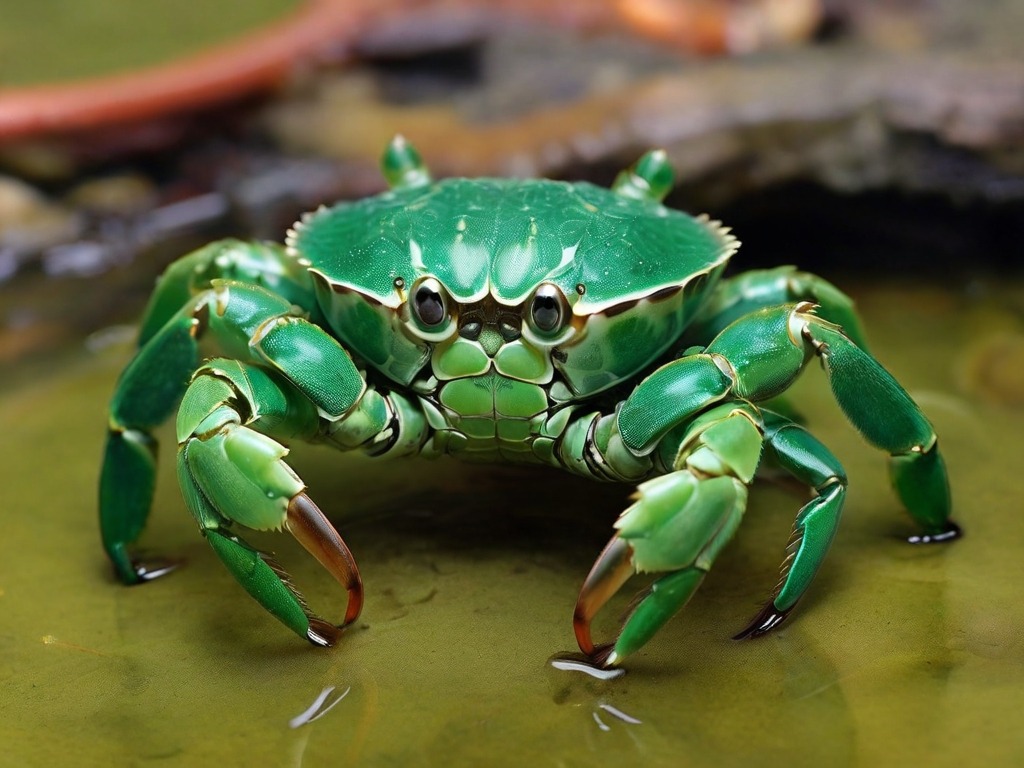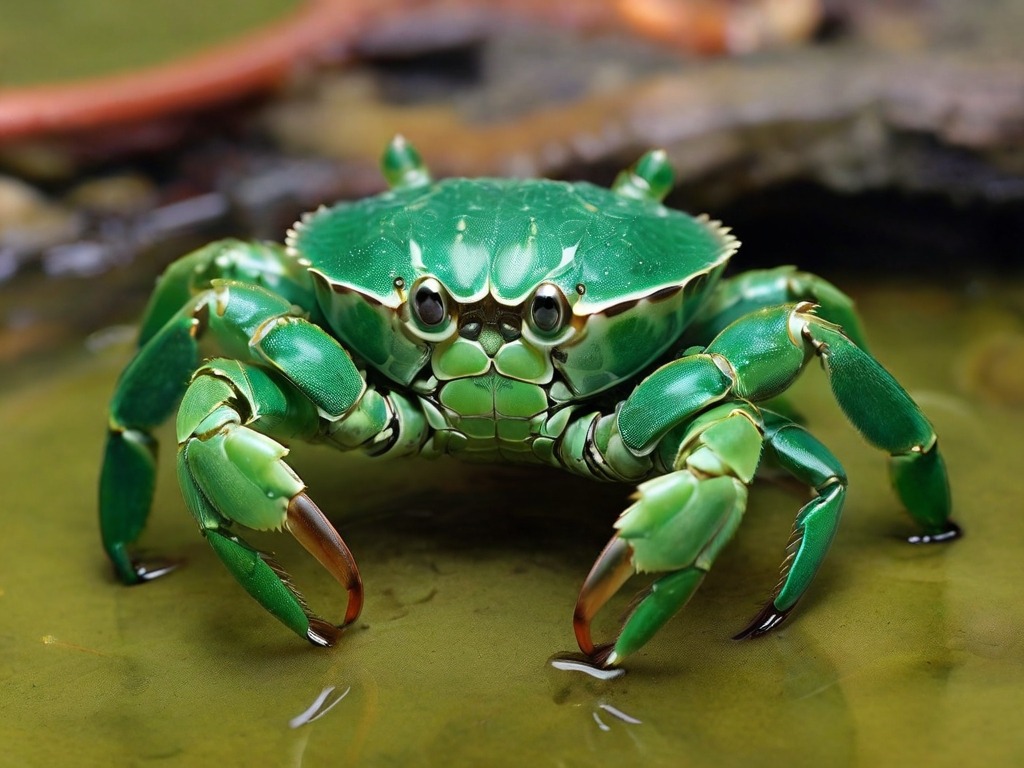Aquarium emerald crabs are a popular choice for controlling hair algae in saltwater tanks. But do these little crabs really eat hair algae, or are they just another case of the blind leading the blind? Let’s take a closer look at what emerald crabs eat and see if they’re the right solution for your hair algae problem.
Emerald crabs are opportunistic feeders and will consume just about anything they can find. In the wild, their diet consists mostly of detritus, carrion, and plant matter. They’ve been known to nibble on soft corals and sponges as well. As for hair algae, it’s not their favorite food, but they will eat it if given the chance.
Emerald crab-eating hair algae
Emerald crabs are a popular choice for saltwater aquariums because they are known to help keep hair algae in check. But what exactly do these little crabs eat, and how do they help control hair algae? It is believed that emerald crabs consume both the macroalgae (hair algae) as well as the microalgae that live on it.
In doing so, they help to prevent the hair algae from taking over the aquarium. Emerald crabs will also pick at other types of algae in the tank, but they seem to prefer hair algae. While emerald crabs can be beneficial in controlling hair algae, it is important to remember that they are not a cure-all solution. If your aquarium has a serious hair algae problem, you may need to take additional steps to get it under control. But if you have a few emerald crabs in your tank, they can definitely help keep things tidy!
Where Do Emerald Crabs Come From?
Emerald crabs, also known as Mithrax crabs, are native to the Caribbean and Gulf of Mexico. They are commonly found in reef environments, including rock crevices and coral rubble. These small, colorful crabs play an important role in keeping the reef clean by feeding on algae and detritus. Due to their popularity in the aquarium trade, they have been introduced to other areas, such as the Hawaiian Islands and the Indo-Pacific region, where they have established invasive populations.
In their natural habitat, emerald crabs are well adapted to their surroundings, using their sharp claws to climb over rocks and their small size to hide from predators. Their bright green coloration allows them to blend in with the surrounding algae and provide them with camouflage from both prey and predators. Overall, emerald crabs are essential members of their ecosystems and their introduction to new areas has caused both positive and negative impacts.
What Do Emerald Crabs Eat
Emerald crabs are one of the most popular types of saltwater aquarium crabs. They are relatively easy to care for and make a great addition to any reef tank. One of the most important things to know about caring for emerald crabs is what they eat.
Most emerald crabs are omnivores, which means they will eat both plants and animals. In the wild, these crabs scavenge for food, eating whatever they can find. In an aquarium setting, you will need to provide them with a variety of foods to keep them healthy.
One of the best foods for emerald crabs is seaweed. Seaweed is packed with nutrients that these crabs need, and it can be easily found in pet stores or online. You can also offer them other vegetables such as zucchini, cucumber, or broccoli.
These vegetables should be blanched or cooked before being offered to the crab to make sure they are soft enough for them to eat. In addition to vegetables, you will also need to offer your emerald crab meaty foods such as shrimp, fish, or squid. You can either feed them live food or frozen food that has been thawed. It is important to offer a variety of foods so that your crab gets all the nutrients they need.

What Animals Eat Green Hair Algae?
Green hair algae is a type of algae that is common in freshwater aquariums. It can be difficult to control and remove once it has taken hold in an aquarium. Many aquarium owners consider green hair algae to be a nuisance, as it can quickly take over an entire tank if left unchecked.
There are a few different ways to remove green hair algae from an aquarium, but the most effective method is to manually remove it with a toothbrush or other scrubbing tool. There are many different animals that eat green hair algae, including fish, shrimp, snails, and crabs. Some fish species that are known to eat green-haired algae include plecos, otocinclus catfish, and Siamese flying foxes.
Shrimp and snails will also consume green-haired algae, and these creatures can actually help keep an aquarium clean by grazing on this type of algae. Hermit crabs are another good option for eating green-haired algae, and they will also help keep the tank clean by picking up uneaten food and debris.
What Do Emerald Crabs Eat in Aquarium?
Emerald crabs are one of the most popular types of aquarium crabs. They are known for their vibrant green color and their active, outgoing personality. So, what do emerald crabs eat in aquariums? The answer is: a lot! Emerald crabs are scavengers and will pretty much eat anything they can find in the aquarium. This includes leftover fish food, algae, detritus, and even other small invertebrates.
In short, if it fits in their mouth and they can catch it – they’ll eat it! While this varied diet is good for them, it does mean that emerald crabs can be messy eaters. So, if you have a tidy aquarium, you may want to keep an eye on them to make sure they don’t make too much of a mess.
Do Hermit Crabs Eat Hair Algae?
Yes, hermit crabs will eat hair algae. This type of algae is common in saltwater aquariums and can be a nuisance for hobbyists. Hermit crabs are opportunistic feeders and will consume most types of algae, including hair algae. In addition to eating hair algae, hermit crabs also help to control its growth by grazing on it.

Do Crabs Eat Green Algae?
Crabs are omnivorous animals, meaning that they will eat just about anything they can get their claws on. This includes plants, other animals, and even detritus (dead and decaying matter). So, yes, crabs do eat green algae.
In fact, they likely play an important role in controlling algal populations in many ecosystems. While algae are not typically considered to be a desirable food source, for crabs they can actually be quite nutritious. Algae are a good source of protein and essential lipids (fats), both of which are necessary for crab growth and development.
Additionally, algae contain a range of vitamins and minerals that can help support a crab’s immune system. So why don’t more animals eat algae? Well, it’s not the most palatable food around! Algae can be quite slimy and unpleasant to eat. However, for crabs (and other creatures that live in close proximity to algae), it’s an easy way to get a quick meal.
Frequently Asked Questions [FAQs]
Do Emerald Crabs eat hair algae in a reef tank?
Yes, Emerald Crabs are known to consume hair algae, making them a popular choice for reef tank clean up crews.
What are some best fashionable items in the reef tank hobby?
Some fashionable items in the reef tank hobby include bubble algae, bubble coral, and various colorful zoanthids and polyps.
How can I keep hair algae (GHA) under control in my reef tank?
There are a few methods to control hair algae growth in a reef tank, such as adding a clean-up crew, including Emerald Crabs, turbo snails, or lawnmower blennies. Additionally, regular water changes and maintaining low phosphate levels can help prevent hair algae outbreaks.
Will Emerald Crabs eat bubble algae?
Yes, Emerald Crabs are known to eat bubble algae, making them a good choice to keep this nuisance algae under control in a reef tank.
Can Emerald Crabs starve if there’s not enough algae for them to eat in the tank?
While Emerald Crabs primarily feed on algae, they can also scavenge for other food sources in the tank. However, it’s important to provide a suitable environment with enough algae for them to graze on to ensure their well-being.
How many Emerald Crabs should I add to my reef tank?
The number of Emerald Crabs to add to a reef tank depends on the size of the tank and the amount of algae present. As a general guideline, adding 1 Emerald Crab per 10 gallons of water can be a good starting point.
Conclusion
Yes, emerald crabs do eat hair algae. They are a type of cleaners that help to keep your aquarium clean and free of algae. These little guys are great at getting rid of pesky hair algae and keeping your tank looking its best.
